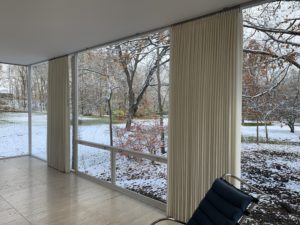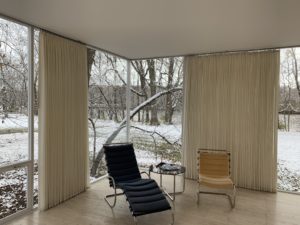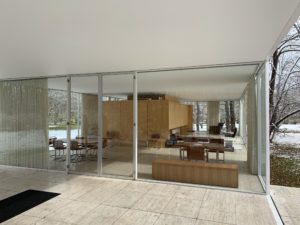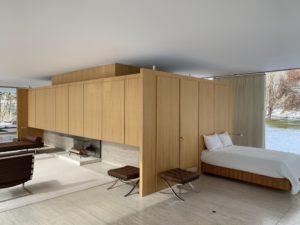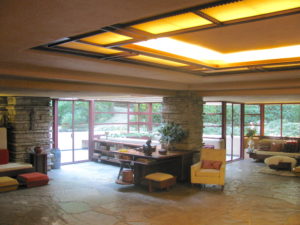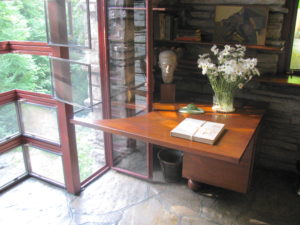The details are not the details. They make the design.
~ Charles Eames
INTERIORS VISION
The Owners determined that their visions for the DTS Project House’s architecture and interiors were inseparable and mills studio would be responsible for both. mills studio was charged with designing the interiors in parallel and in conjunction with the architecture so that the DTS Project House is designed both from the inside-out and the outside-in. mills studio’s responsibility for both the architecture and interiors avoids the need to segregate architecture and interiors and removes the need to interpret the architectural intent in order to design the interiors. Questions of what constitutes architectural design and what constitutes interior design are irrelevant in the DTS Project House.
Client’s Directive
Owners issued the following directive to mills studio regarding design of the interiors:
Jeffrey –
This affords me an opportunity to clarify and extend my stated interior design objectives for this project.
- Comfort is essential in all furniture choices. I believe good design and materials should in no way need to be at the expense of comfort.
- Colors, fabrics and finishes should not be chosen at the expense of maintainability. Everything needs to be easily cleaned, have stain protection and not be too “precious”.
- I have no interest in “classic” modern furniture merely for bragging rights, investment value or any other superficial purpose. This does not mean I don’t want to use pieces, as are found at places like Room and Board, B&B Italia or Design Within Reach, that carry designer names. Rather, I’m just far more interested in how well a piece works and looks than brand, designer recognition, price, etc. I will not reject a piece just because it comes from Crate and Barrel or Ikea if it is of high quality, is well suited for the house and is very attractive and comfortable.
- I want to purchase furniture that is durable, well constructed and will serve for many years.
- Flexibility and modularity is great when the space has multiple purposes that need to be respected. In the absence of such concerns, those characteristics can be ignored.
- The red couch/day bed I showed you has many characteristics I value, as does the glass and metal table beside it. The couch has a strong metal frame, beautiful red dense wool upholstery, converts to a queen bed without moving it away from the adjacent wall, a clean modern style, is comfortable and is easy to clean around and under it. The table is also flexible (literally), it resists spills, it is heavy and well made. The table is very attractive and works well in the space. Both pieces work very well and exemplify the sort of furniture I want to use throughout the new house.
- Value. Whether pricey or inexpensive, each piece must be well worth it’s cost because of how it is made and how well it works in the home. I do not want to spend money on anything where the value proposition is in its history, age, rarity, reputation or other ephemeral factors. Nor do I impute value to an object merely because it is unique. I assign value to objective quality, subjective beauty, our sense of utility and suitability to the task. I want no furniture at all that is merely “decorative”. We can acquire art and accessories to decorate the house. I don’t like “decorative” throw pillows if all they do is look nice and get “thrown” on the floor because they are not really comfortable or in the way when using a particular piece of furniture. That said, every piece must work well aesthetically in its surroundings and be pleasing to the eye.
- I like texture as much as color.
- I’m concerned about how light (day and night, natural and not) plays on the surfaces and fabrics. How a room it lit, how flexible the lighting plan is and how easy it is to dim, and modify (need granularity in control, so not large groups of lights on a single switch) is very important to me. I want to be able to have a few different “scenes” and ways to “stage” each room, depending on time of day and what is taking place in the room. Use of colored lights, especially adjustable color, should be considered.
- Also regarding illumination, I’m very concerned about how steps, house plants, landscaping, furniture groupings, art walls and sculptures are lit.
- I want the building itself, including the gabions, pathways, motor court, pool/spa area and all other architectural features to have planned dramatic lighting.
- I generally prefer that upholstery, draperies, shades, rugs and wall coverings not call too much attention to themselves and that the art, plants, view and sculpture be the “center of attraction” in most rooms. That said, I take no issue with bright or bold textiles (like the aforementioned red wool couch upholstery) if they can “pull it off” without becoming too much of a distraction. I’m comfortable with color. I don’t require too much neutrality. I do not like color for color’s sake, however as one finds in so-called “accent walls”.
- Most of all, it is essential that my home be inviting and accessible. I want people to want to stay and enjoy themselves. They should not feel that they are in a place that is museum-like or delicate or precious. They need to be able to “put their feet up and relax”, to party and to interact easily. I’m building a home not just for Susan and I but for our entire community of friends. We like to entertain and extend our hospitality widely. We want people to feel at home. I want to offer visitors a place they may wish to emulate in some respects, as their own personal taste and resources allow.
I hope this helps guide mills studio in their efforts to make choices that have a high likelihood of matching my aesthetic preferences.
Many thanks,
Warren
mills studio Statement
It is difficult to practically divide architecture and interior design into distinct disciplines and is intellectually impossible to divide architecture and interior design into separate disciplines if your aim is to create a singular experience. While it is possible that interior design can work without architecture, architecture does not work or exist without interior design. In any significant architecture, especially single-family residences, it is not possible to segregate interior design decisions from the architecture as the interior design is the architecture. For example: It is hard to imagine the glazing of Mies Van de Rohe’s Farnsworth House without the white fabric drapery – they are inseparable and make each other appropriate.
It is impossible to imagine the architecture and interior design as separate entities in any significant work of architectural art no matter the architectural vision. Consider two very different visions and aesthetics: Mies Van de Rohe’s Farnsworth House and Frank Lloyd Wright’s Fallingwater. It would strike most as absurd that Mies or Wright would do the architecture and someone else could possibly do the interiors. Much of the power of these two buildings and the work of comparable architects is that our mind never segregates the architecture, the interior design, the landscape design, the engineering, and instead we experience the buildings as a singular entity – we simply experience architecture. If architecture and interior design are not approached as inseparable the “interior design” becomes merely decoration and subordinate details.
Architects have always lamented the negative affect on their architecture when the interior design was separated and completed by others, often de facto by the Owners. Frank Lloyd Wright famously stated in a lecture titled “The Cardboard House, “But when the building itself was finished, the old furniture the clients already possessed went in with them to await the time when the interior might be completed. Very few of the houses were, therefore, anything but painful to me after the clients moved in and, helplessly, dragged the horrors of the old order along after them.”One way Wright and other architects have tried to rectify this dilemma was to “build-in” as much furniture as possible so that in concept there are no intrusions to negatively affect the architecture. “Built-ins” is representative of not only physically built-in furniture, but also an attitude toward limiting the occupants ability to affect the architectural experience. If an Owner’s possessions do lessen the character of the architecture, then there is likely a mis-alignment between Owner’s and Architect’s vision or between the architecture and the Owners’ lifestyle and aesthetic sensibilities. In neither case, can “built-in furniture” resolve the mis-alignment.
Interiors should balance Wright’s vision of idiosyncrasy and control and Mies’ vision of universal space and flexibility. Certain architectural features should be accentuated and establish a context with “built-ins”, but otherwise interiors should provide for flexibility and opportunity. The architectural agenda and resulting architecture should establish a sufficiently defined context and framework that both helps one make responsible design decisions and also is not easily damaged by intrusions. An architectural context that allows for a dynamic freedom to adjust and change over time provides for an interior design that can greatly contribute to sustainability. “Built-ins” and what they represent as a method of control are not the only or ultimately most effective way to assure the character and quality of the interior experience long term. Architecture should not require a single design decision or object to occupy the architecture, but should require and point to a singular character.
The finishes, colors, furnishings, HVAC grilles, hardware, fixtures, appliances, video screens, window coverings, electrical device covers rugs, lighting, art, home automation control devices, and plants all help define the character of the architecture – are the architecture.
The DTS Project House attempts to remove any segregation of architecture and interior design and provide a sufficiently powerful framework that encourages the house to be occupied without lessening the architecture.
Have nothing in your house which you do not know to be useful or believe to be beautiful.
~ William Morris

